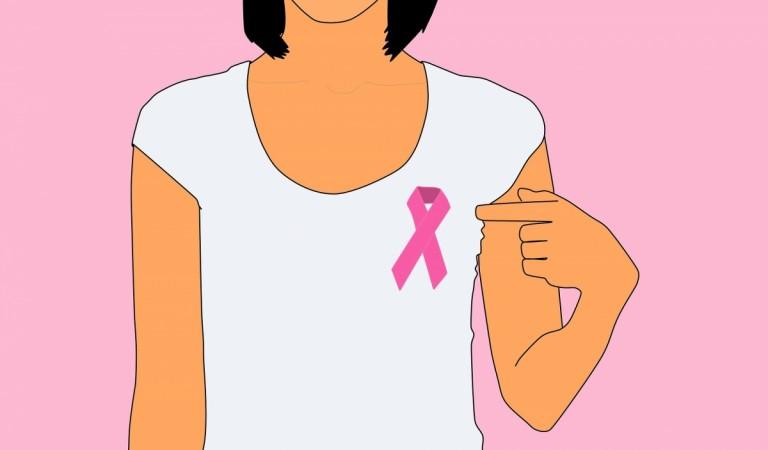Breast cancer is a formidable adversary, affecting millions of women worldwide and causing substantial suffering and loss of life. However, there is a beacon of hope in the fight against this disease -- early detection through mammography. In this article, we will explore the invaluable advantages of mammography in identifying breast cancer at its earliest and most treatable stages.
The importance of early detection:
Breast cancer, like many other forms of cancer, is most effectively treated when detected at an early stage. Mammography, a specialised X-ray of the breast, plays a crucial role in this process by identifying abnormalities that may not be noticeable through physical examination alone. Here are some of the compelling reasons why early detection through mammography is so important:
Improved survival rates: When breast cancer is detected at an early, localised stage, the five-year survival rate is significantly higher than when it is diagnosed at a more advanced stage. Early detection provides women with a greater chance of successful treatment and long-term survival.
Less aggressive treatment: Early-stage breast cancer often requires less aggressive treatments such as surgery and radiation therapy, minimising the physical and emotional toll on patients. In contrast, advanced-stage breast cancer may necessitate more extensive treatments, which can be more taxing and have a higher risk of complications.

Better quality of life: Early detection can lead to smaller tumor sizes, making breast-conserving surgery (such as lumpectomy) a viable option for many women. This results in better cosmetic outcomes and improved quality of life, as it preserves the natural appearance of the breast.
Lower healthcare costs: The cost of treating advanced-stage breast cancer is substantially higher than treating early-stage disease. Early detection through mammography can reduce healthcare expenditures by preventing the need for more expensive and prolonged treatments.
Increased treatment options: Detecting breast cancer at an early stage provides patients with a wider range of treatment options, including the possibility of participating in clinical trials for innovative therapies.
Emotional well-being: The anxiety and emotional distress associated with a breast cancer diagnosis are often alleviated when the disease is caught early. Women who undergo routine mammography screenings tend to experience less fear and uncertainty compared to those diagnosed at a later stage.
The role of mammography:
Mammography is the gold standard for breast cancer screening. It is a safe and effective imaging technique that can detect breast cancer in its earliest stages, often before symptoms develop.
Here's how mammography works:
X-ray imaging: During a mammogram, the breast is compressed between two plates, and X-rays are used to create detailed images of the breast tissue. These images, called mammograms, can reveal small abnormalities, including tumors that are too small to be felt during a physical examination.
Early detection: Mammography can detect breast cancer at an early stage when it is confined to the breast and has not spread to nearby lymph nodes or distant organs. This early detection is crucial for effective treatment and improved outcomes.
Regular screening: The recommended age to start regular mammography screening varies by country and medical guidelines, but it generally begins between the age of 40 and 50. The frequency of screening may also vary, but annual mammograms are common.

Treatment options:
When breast cancer is diagnosed, treatment options vary depending on factors such as the stage of the disease, the type of breast cancer, and the patient's overall health. Common treatment modalities include:
Surgery: Surgical options range from breast-conserving surgery, such as lumpectomy or partial mastectomy, to mastectomy, which involves removing the entire breast. Lymph node removal may also be necessary to determine if cancer has spread.
Radiation therapy: This treatment uses high-energy rays to target and kill cancer cells. It is often used after breast-conserving surgery to eliminate any remaining cancer cells.
Chemotherapy: Chemotherapy involves the use of drugs to kill cancer cells or stop their growth. It can be administered orally or intravenously and is typically recommended for advanced-stage breast cancer or as adjuvant therapy after surgery.
Hormone therapy: Hormone therapy is effective for hormone receptor-positive breast cancers. It involves medications that block hormones like estrogen or progesterone, which can fuel the growth of certain breast cancers.
Targetted therapy: Targeted therapies are drugs that specifically target proteins or genes involved in cancer growth. They are used in cases of HER2-positive breast cancer, which over expresses the HER2 protein.
Immunotherapy: Immunotherapy works by stimulating the body's immune system to recognise and attack cancer cells. While still being researched for breast cancer, it shows promise in certain cases.
Clinical trials: Participation in clinical trials can provide access to innovative treatments and therapies that are still in the experimental phase, potentially offering new hope for patients.
The choice of treatment depends on individualised care plans developed by a multidisciplinary team of healthcare professionals. It's essential for patients to have open and informed discussions with their healthcare providers to make the best treatment decisions tailored to their unique circumstances.
The benefits of early detection of breast cancer through mammography cannot be overstated. It offers women the opportunity for less aggressive treatment, better outcomes, and improved quality of life. As a physician, I strongly encourage all eligible women to prioritise regular mammography screenings as part of their healthcare routine. Early detection saves lives, and it is our most potent weapon in the battle against breast cancer.
(With inputs from IANS)














